Scratches on various surfaces, including cars, phone screens, and furniture, can be frustrating. Many people turn to an unlikely household item—toothpaste—as a quick fix for minor scratches.
But does toothpaste really remove scratches? And how does it work? Let’s dive into the science behind it and when it is effective.
How Does Toothpaste Remove Scratches?
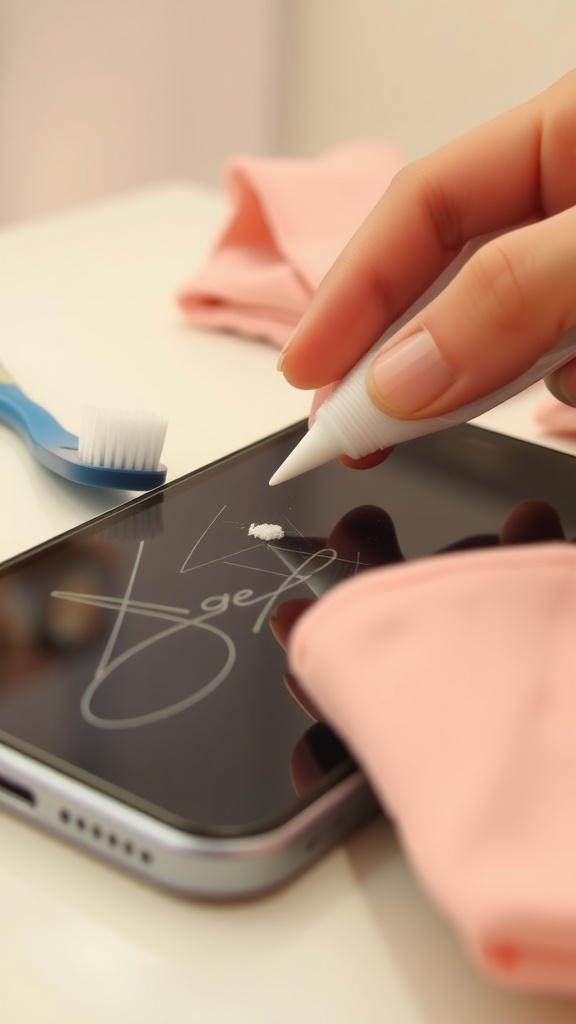
Toothpaste is mildly abrasive, which allows it to smooth out surface imperfections by polishing away a very thin layer of material. Here’s how it works:
✔️ Abrasive Particles: Most toothpaste contains tiny abrasive particles like silica, calcium carbonate, or baking soda.
These act like a fine sandpaper to buff out minor imperfections.
✔️ Filling Effect: In some cases, toothpaste can temporarily fill in minor scratches, making them less noticeable.
✔️ Polishing Action: By rubbing toothpaste in circular motions, it evens out the surface, reducing the visibility of scratches.
However, toothpaste only works on very shallow scratches and is not a solution for deep or structural damage.
When Can Toothpaste Effectively Remove Scratches?
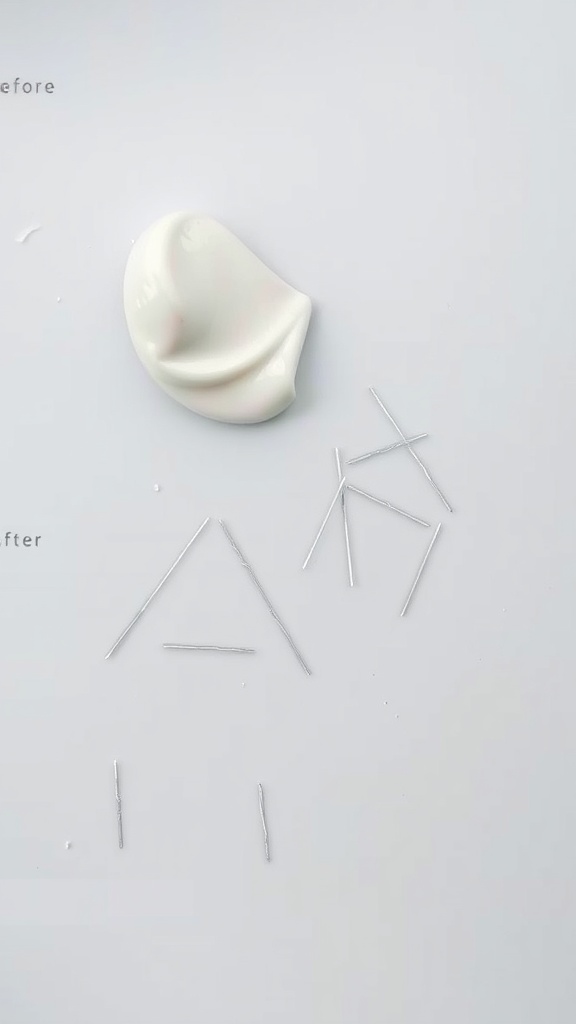
Toothpaste is a useful hack for minor surface scratches, but it doesn’t work on deeper damages. Here are some surfaces where toothpaste can be effective:
✅ Car Clear Coat Scratches – Works only on very fine scratches in the clear coat layer.
✅ Phone Screens – Can reduce visibility of light scratches on tempered glass.
✅ Plastic Surfaces – Works well on headlights, watches, and acrylic surfaces.
✅ Eyeglasses – Can smooth out light scuffs on plastic lenses (avoid on coated lenses).
✅ CDs, DVDs, and Game Discs – Helps with minor scratches that affect readability.
🚫 When Toothpaste Won’t Work:
- Deep scratches that expose metal or glass.
- Cracks or structural damage.
- Paint layers on cars or electronics that have deep chips.
Step-by-Step Guide to Using Toothpaste for Scratch Removal
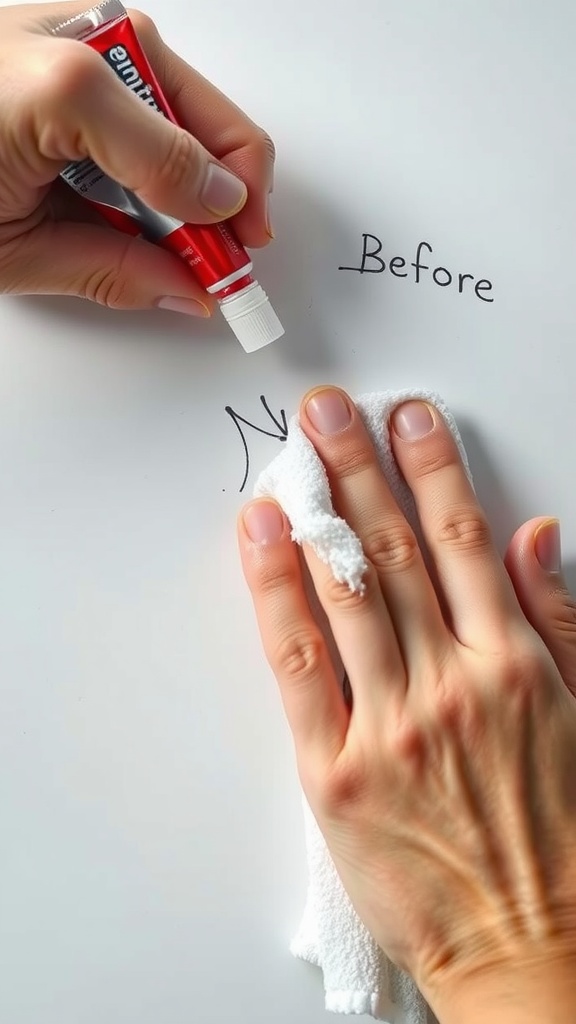
If you want to try toothpaste as a scratch remover, follow these steps for the best results:
What You’ll Need:
✔️ Non-Gel White Toothpaste (Avoid colored or gel-based types)
✔️ Microfiber Cloth or soft cotton cloth
✔️ Water for cleaning
Steps to Remove Scratches:
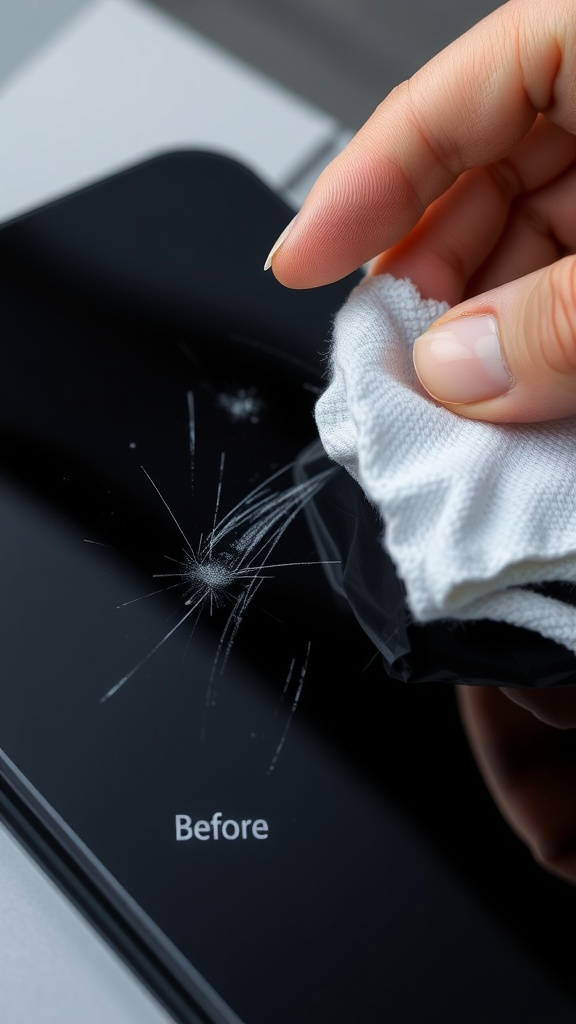
1️⃣ Clean the Surface: Wash and dry the scratched area to remove any dirt or dust.
2️⃣ Apply Toothpaste: Put a small amount of toothpaste on a soft microfiber cloth.
3️⃣ Rub in Circular Motions: Gently rub the toothpaste over the scratch for 30 seconds.
4️⃣ Wipe and Inspect: Use a clean, damp cloth to remove excess toothpaste.
5️⃣ Repeat if Needed: For best results, repeat the process 2-3 times if the scratch is still visible.
6️⃣ Polish the Area: Finish by applying a light polish or wax for protection.
Best Types of Toothpaste for Scratch Removal
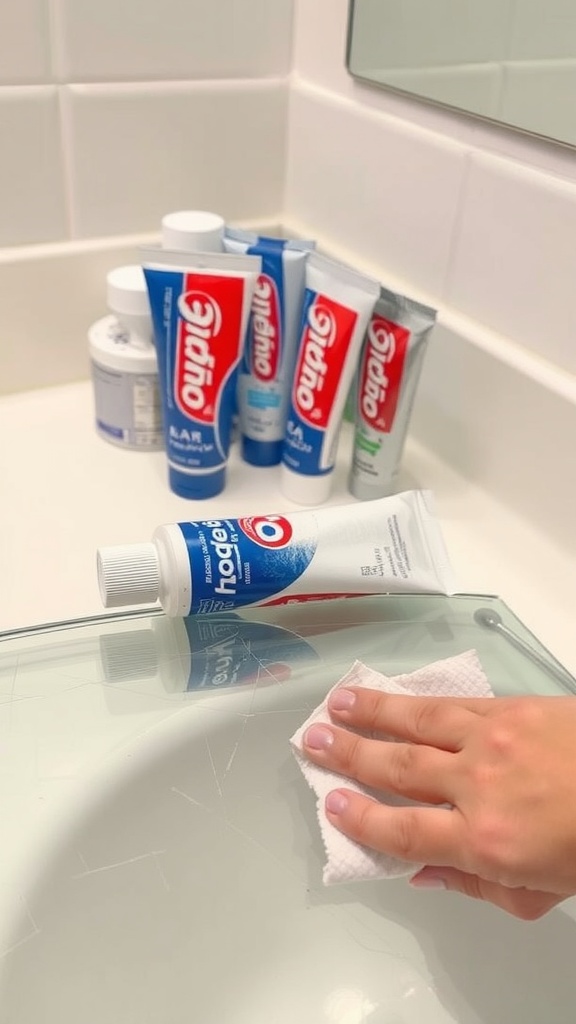
Not all toothpastes work equally well for scratch removal.
The best ones contain mild abrasives. Here are the most effective types:
✔️ Whitening Toothpaste – Contains baking soda or silica for gentle abrasion.
✔️ Non-Gel Toothpaste – Works better than gel-based varieties.
✔️ Toothpaste with Micro-Crystals – Offers better polishing action.
🚫 Avoid:
- Gel-based toothpaste (not abrasive enough).
- Colored toothpaste (may leave stains).
- Toothpaste with beads or large granules (can cause more scratches).
Alternative DIY Scratch Removal Methods
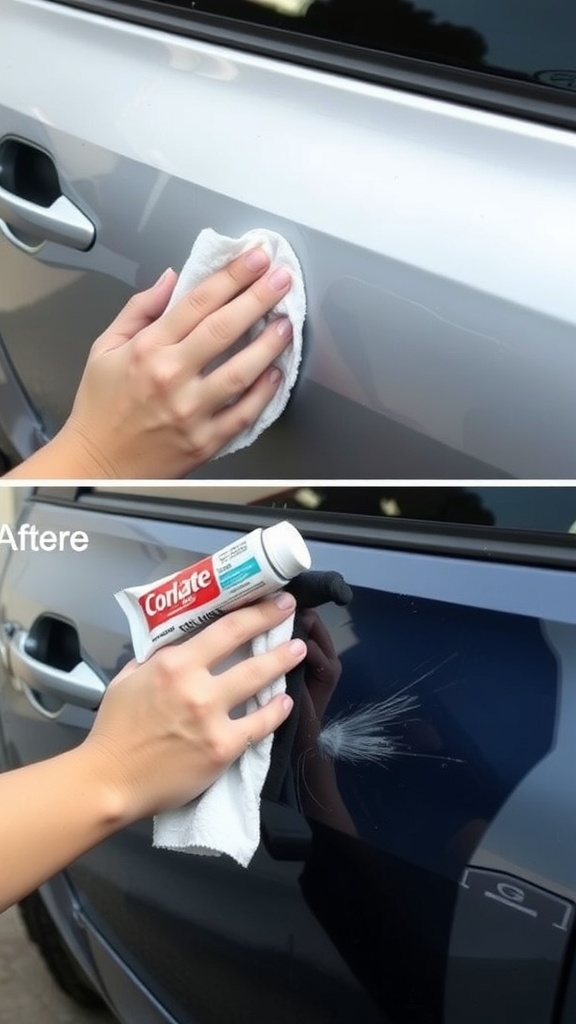
If toothpaste doesn’t work or you’re looking for other methods, try these DIY alternatives:
✔️ Baking Soda & Water: Mix into a paste and rub gently for light scratches.
✔️ WD-40: Can make scratches less visible on car surfaces.
✔️ Rubbing Compound: Works better than toothpaste for car scratches.
✔️ Metal Polish: Great for scratches on stainless steel or chrome.
✔️ Magic Erasers: Can smooth out scuffs on plastic or painted surfaces.
Frequently Asked Questions (FAQs)
1. Can toothpaste remove deep scratches?
No, toothpaste only works on minor surface scratches. Deep scratches require professional repair or touch-up kits.
2. How long should I rub toothpaste on a scratch?
About 30 seconds to 1 minute in circular motions. If the scratch is still visible, repeat the process up to three times.
3. Can toothpaste damage surfaces?
Yes, if used too aggressively, toothpaste can dull the finish of delicate surfaces. Always test on a small area first.
4. Does toothpaste work on all cars?
Toothpaste can help with minor clear coat scratches but will not repair deeper paint damage or exposed metal.
5. Is toothpaste better than a scratch remover?
No, toothpaste is a temporary solution. A dedicated scratch remover or rubbing compound is much more effective for real repairs.
Final Thoughts
Toothpaste can be a quick and budget-friendly hack for fixing minor scratches on various surfaces. While it’s not a permanent solution, it can improve the appearance of light scuffs. For deeper scratches, professional products or repairs are the best option.
🚗✨ Want a long-lasting fix? Use a high-quality scratch removal kit instead of relying solely on toothpaste!
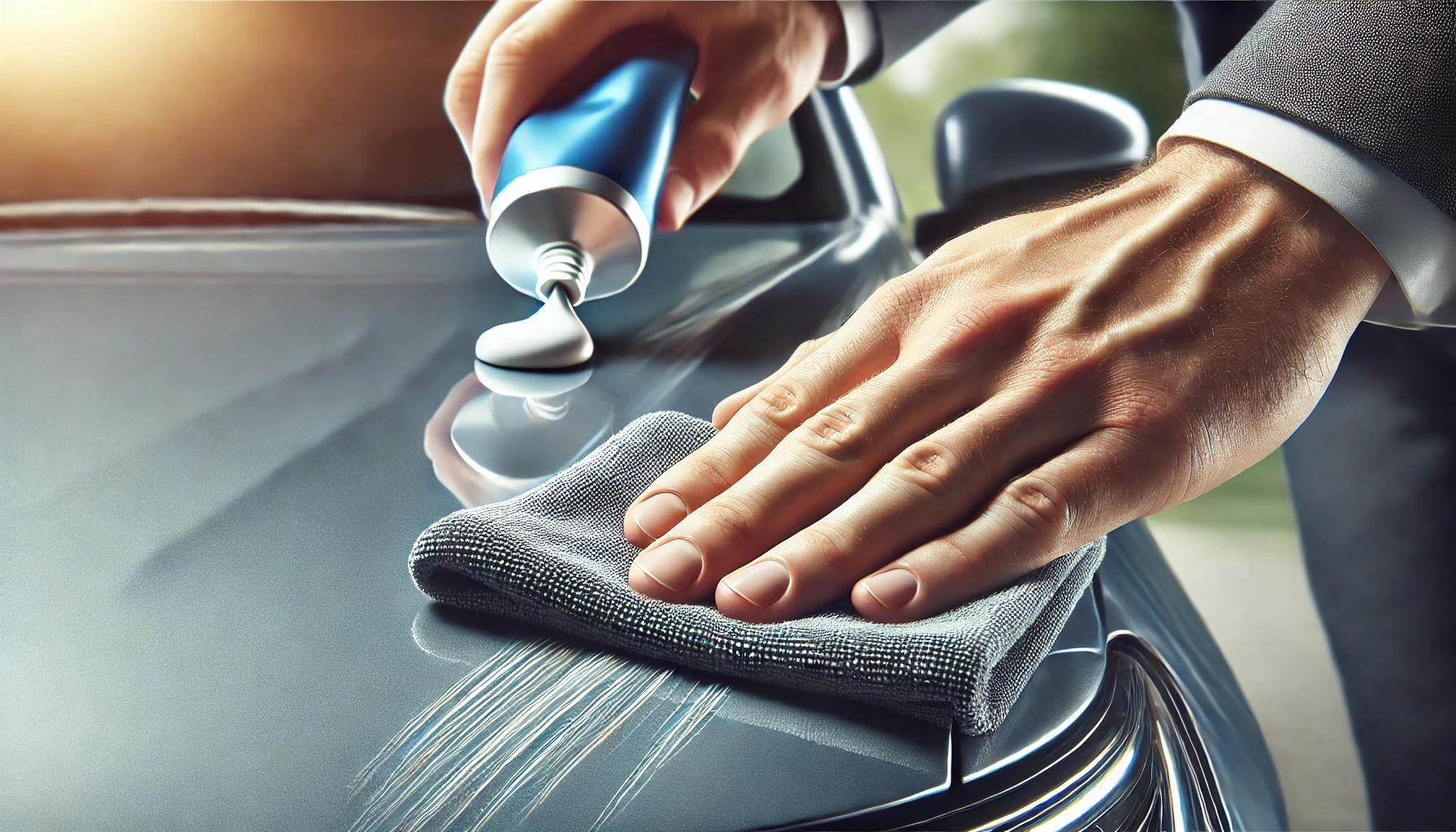
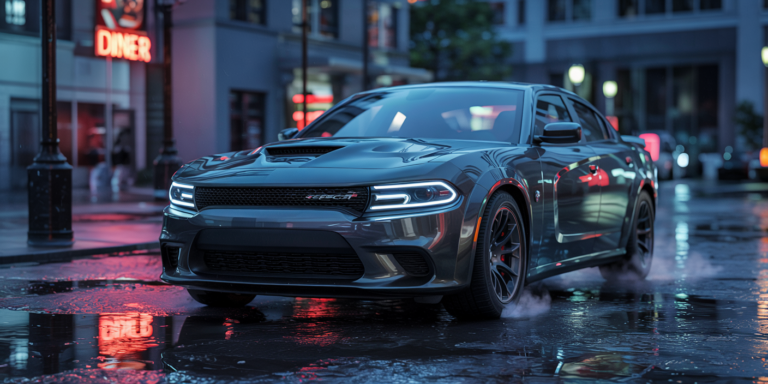

It’s rare to come across texts that educate, inspire, and enchant all at once! Your article is not just a collection of information – it’s a true feast for the mind. Your words wrap around the reader like a warm blanket on a chilly evening, making them want to return again and again.